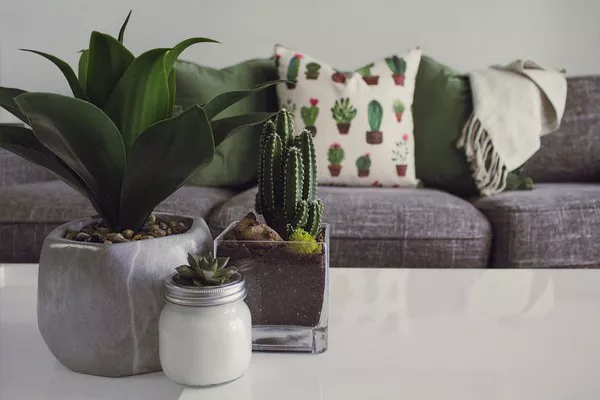Succulents have gained immense popularity in the realm of gardening due to their unique appearance and ability to thrive in challenging conditions. While traditional cultivation methods involve nurturing succulents through their roots, an emerging trend is gaining traction – growing succulents without roots. This innovative approach offers an intriguing way to propagate and care for these fascinating plants. In this article, we delve into the techniques, benefits, and challenges associated with growing succulents without roots.
Understanding Rootless Propagation
Rootless propagation, also known as “leaf propagation,” involves growing succulents from detached leaves, enabling enthusiasts to create new plants without relying on established root systems. This method is particularly suitable for species that naturally shed leaves, such as Echeveria and Sedum. While rooting is a crucial aspect of traditional plant growth, rootless propagation taps into the remarkable adaptability of succulents to regenerate and establish new roots under controlled conditions.
Step-by-Step Rootless Propagation
Selecting Healthy Leaves: Choose mature, healthy leaves from the parent succulent. Leaves with blemishes or signs of disease should be avoided.
1. Leaf Removal
Gently twist or cut leaves from the stem using clean, sharp scissors or pruning shears. Allow the detached leaves to callus over for a day or two. This prevents potential rot during the early stages of propagation.
2. Planting the Leaves
Place the callused leaves on a well-draining propagation medium, such as a mixture of cactus potting soil and perlite. Avoid deep planting; simply lay the leaves on the surface.
3. Providing Adequate Light
Indirect sunlight or filtered light is optimal for rootless succulents. Intense sunlight may scorch the leaves, hampering the propagation process.
4. Maintaining Humidity
Covering the leaves with a transparent lid or plastic wrap creates a mini greenhouse effect, maintaining the necessary humidity for successful propagation. Mist the leaves occasionally to prevent excessive drying.
5. Root Development
After a few weeks, tiny roots will start to emerge from the base of the leaves. This indicates that the leaves are ready to be planted in individual containers with regular succulent soil.
Benefits of Rootless Propagation
1. Rapid Propagation: Rootless propagation accelerates the multiplication of succulent plants. Unlike traditional methods that rely on the growth of new roots, rootless propagation focuses on the leaves’ innate ability to develop roots, expediting the process.
2. Varietal Preservation: Some succulent varieties are vulnerable to root diseases or pests. By bypassing the root stage, growers can ensure the preservation of specific genetic traits without the risk of contamination.
3. Space Efficiency: Rootless propagation requires less space than traditional methods. This is particularly advantageous for enthusiasts with limited gardening areas or those seeking to expand their collection.
4. Fascinating Educational Tool: Rootless propagation offers a captivating educational experience, enabling individuals to witness firsthand the remarkable regenerative capabilities of succulents.
Challenges and Considerations
1. Vulnerability to Rot: During the initial callusing phase, leaves are vulnerable to rot if exposed to excess moisture. Adequate callusing time and proper humidity control are essential.
2. Patience is Key: Rootless propagation demands patience. The process from leaf detachment to the establishment of a new plant can take several weeks or even months.
3. Leaf Selection Matters: Healthy, plump leaves are more likely to succeed in propagation. Leaves that are too thin or lacking vitality might struggle to develop roots.
4. Variable Success Rates: Success rates can vary based on factors such as species, environmental conditions, and individual leaf health. Experimentation and observation are crucial.
Advanced Techniques
1. Beheading: This technique involves cutting the top portion of a succulent stem and allowing it to callus before planting it. New rosettes will emerge from the cut end, leading to multiple plants.
2. Offsets: Some succulents produce offsets, also known as “pups,” which are small plantlets that grow at the base of the main plant. These can be gently separated and propagated independently.
Caring for Rootless Succulents
1. Watering: Water sparingly during propagation to avoid overhydration. Once new plants develop and establish roots, gradually increase watering frequency.
2. Transplanting: When the new plants have established roots and a few leaves, they can be transplanted into regular succulent soil mix. Handle the fragile roots with care during this process.
3. Light: Gradually introduce the rooted succulents to more sunlight as they grow. Too much light initially can lead to sunburn on the young leaves.
Conclusion
Growing succulents without roots through rootless propagation offers an exciting and rewarding alternative to traditional methods. This approach capitalizes on the innate regenerative abilities of succulents, allowing enthusiasts to witness the remarkable process of new roots and shoots forming from detached leaves. While rootless propagation comes with its challenges, including patience and environmental considerations, the benefits of rapid propagation, genetic preservation, and space efficiency make it a compelling technique for succulent enthusiasts. By understanding the nuances of rootless propagation and embracing its possibilities, gardeners can expand their succulent collections in innovative ways.


